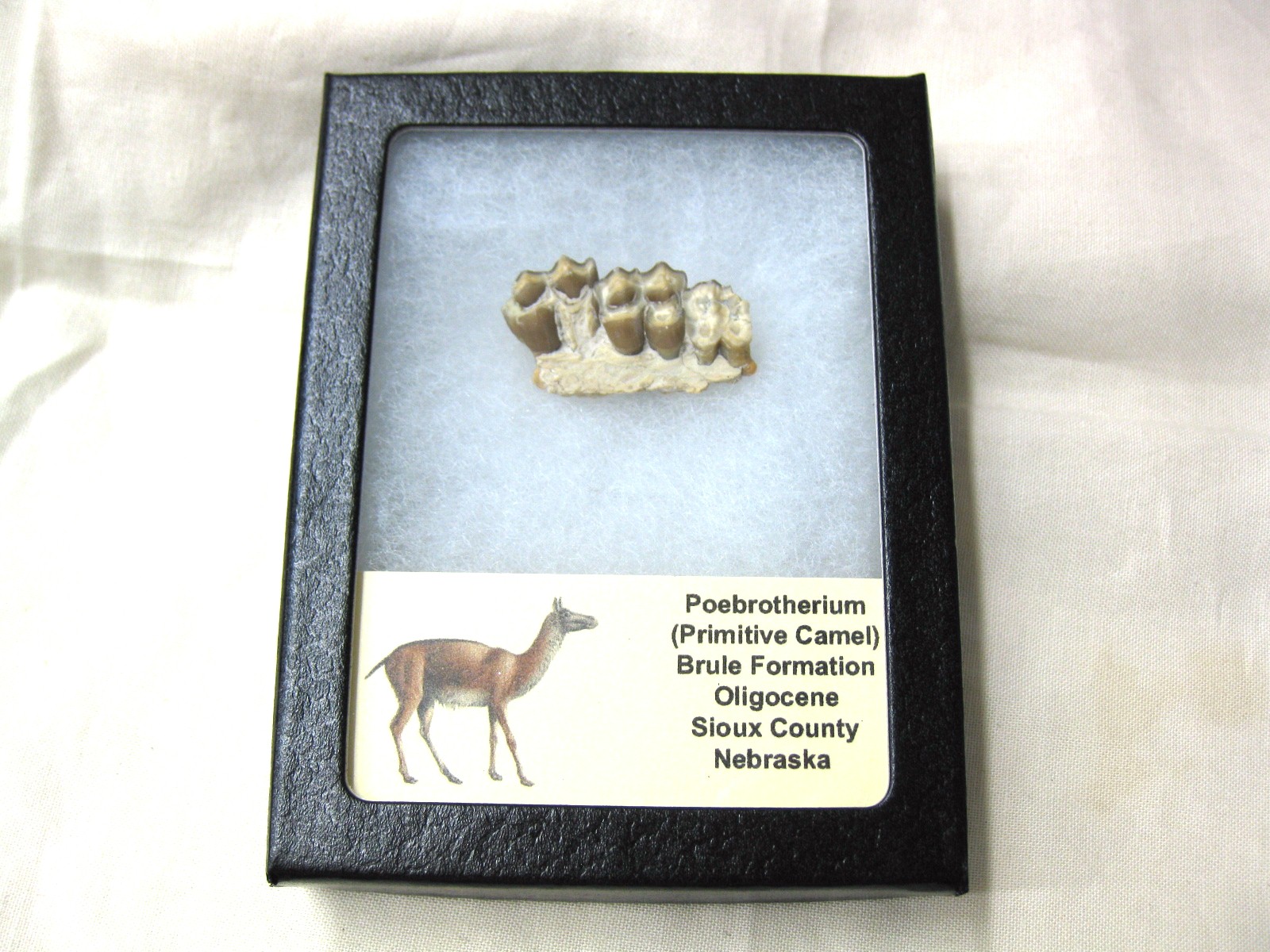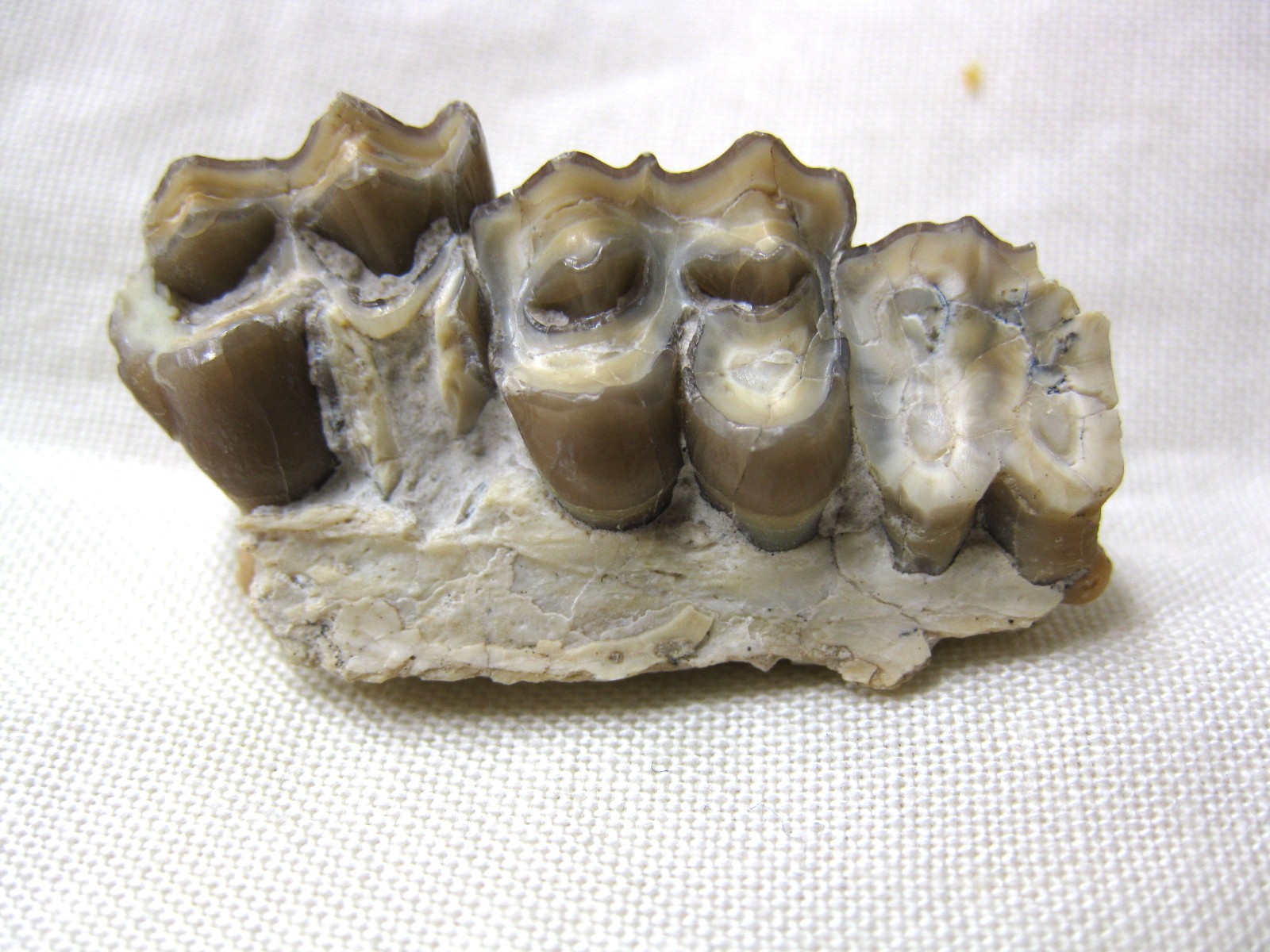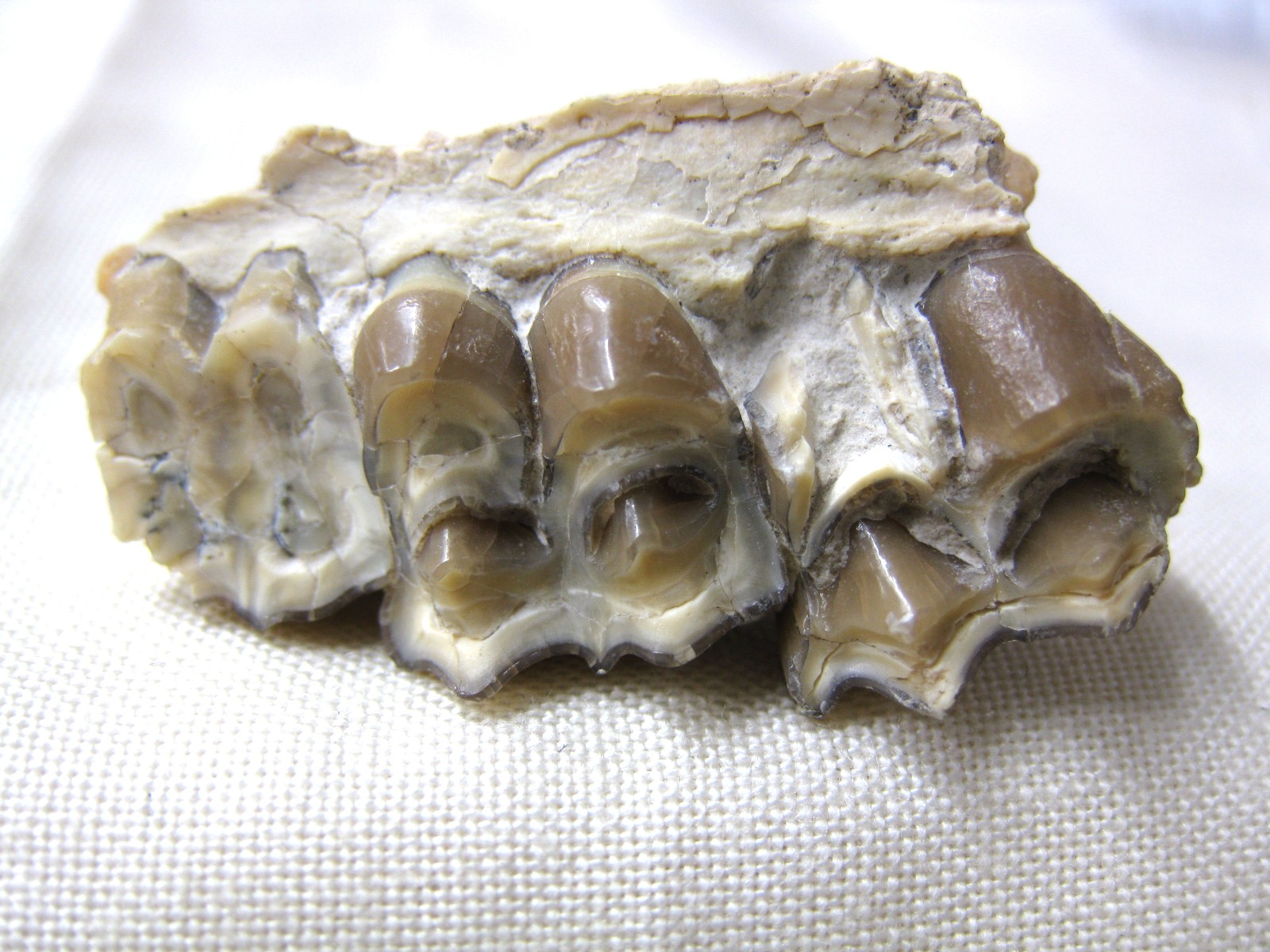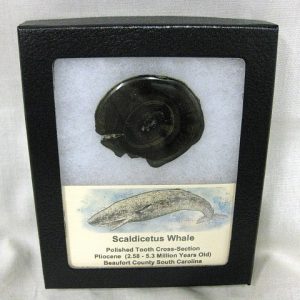Description
- Poebrotherium Camel Jaw
- Oligocene Age
- Brule Formation
- Sioux County, Nebraska
- Specimen measures approx. 1 3/8″ long and will come in the 3.25″ x 4.25″ Riker Mount with Label as Shown
Poebrotherium is an extinct genus of camelid, endemic to North America. They lived from the Eocene to Miocene epochs, 46.3—13.6 mya, existing for approximately 32 million years. Poebrotherium looked more like modern camels than its predecessor Protylopus, but at 90 centimetres (3.0 ft) in height, it was roughly the size of a modern sheep. Its skull resembled that of a modern llama, while its limbs ended in hooved toes and were more built for speed than the feet of Protylopus. Despite this apparent adaptation to the open plains, Poebrotherium has been found in all major White River environments, including forests and river bank deposits, indicating that it was not tied to one particular environment. The teeth of Poebrotherium were more generalized than those of modern camelids. In fact, despite the name meaning “grass-eating beast” it is likely that Poebrotherium was either a browser or a mixed-feeder, and grass may have played a minimal role in the diet of Poebrotherium.









